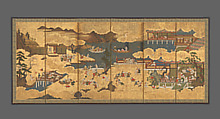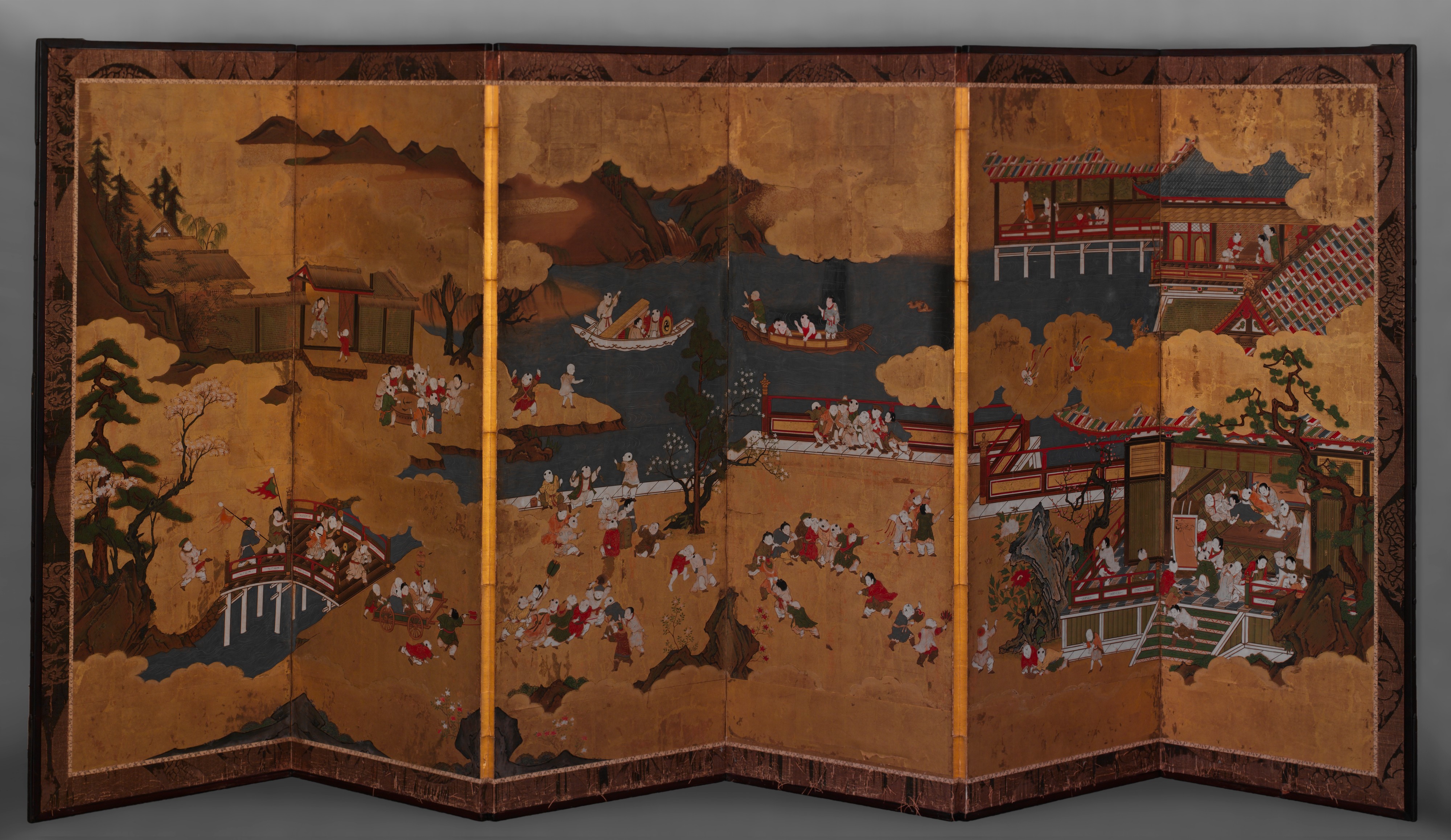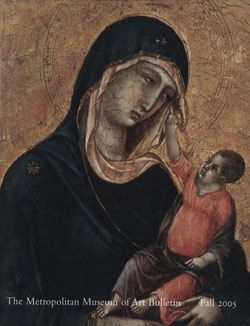One Hundred Chinese Boys
Not on view
A sumptuous estate, including a bridge and pavilion over a lake, is set off by a shimmering gilded background and golden clouds and enlivened by cavorting children. The conventional motif of One Hundred Children has obvious auspicious connotations in the Chinese tradition. Here, the ancient subject is combined with the moralizing theme of the Four Gentlemanly Accomplishments (calligraphy, painting, music, and the game of go), which engage the children. One Hundred Children became one of the most popular themes among the Kano painters, the official artists who worked for the shoguns and their vassals during the Edo period. The anonymous painter of this screen seems to have based it on a readily available model. The dry, mannered execution of the landscape elements points to a date in the eighteenth century for this work.
Due to rights restrictions, this image cannot be enlarged, viewed at full screen, or downloaded.
This artwork is meant to be viewed from right to left. Scroll left to view more.




